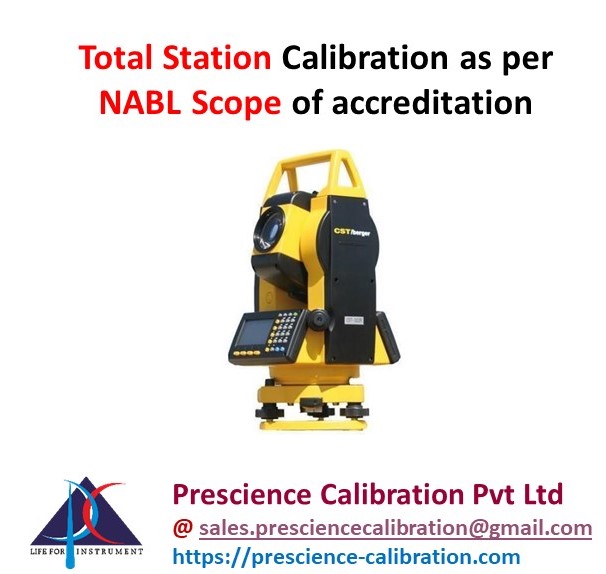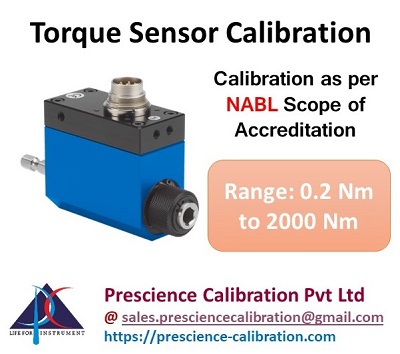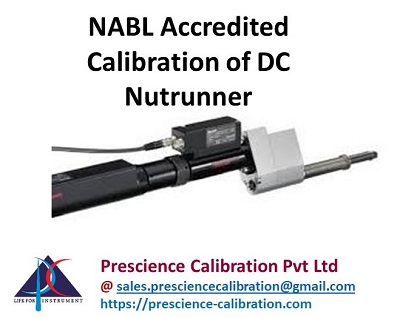Articles
Technical
June 2021 - Updated
What is Calibration?
Generally, Calibration is non-destructive process, unlike some testing where sample may or may not be subjected to physical change. Calibration is a process by which measurement relationship is established with the reference standard / master, which has un-broken chain of measurement called measurement traceability. The calibration process does not end with above statement, during the process factors like environmental condition, measurement uncertainty of reference master, uncertainty due to variations in observed values, accuracy of device is some of the factors which are taken into account while calibration.
Various standards are followed to calibrate a given instrument; these standards are published by various organisations like ISO. Standard calibration practice is followed all over the world by reputed organisations and accredited calibration laboratory.
Who can perform the calibration?
Calibration is performed by qualified and technically trained expert in the relevant calibration subject field, may be manufacturer of the instrument who has got good knowledge about his product or any accredited calibration laboratory who are certified to perform such calibration activity or recognised organisation. Calibration is performed under highly controlled environment. Such organisation have good quality management system in place, some may be specific to calibration only.
Person or organisation performing such calibration activity are highly trained in the subject matter and are subjected to frequent audits by industry expert, in case of accredited organisation.
What is reference Standard / Master?
Reference Standard / master which are used for calibration are of very high accuracy instruments and has known measurement uncertainty with un-broken chain of measurement. Generally, reference device has 10 times better accuracy than the device which is under calibration. Reference standard instruments being very delicate has to be handled with lot of care and operated under clean and controlled environmental condition. Care is taken and ensured that proper conditioned power is applied to such instrument if it operates on electricity or other source of power supply.
Why is Calibration important?
Before we understand why calibration is important, let us understand measurement. Imagine a case where we buy some petrol for our vehicle and display has shown 10 litres and we have paid for same. Now if the measurement is not correct either we would have paid more for getting less or we have paid less and actually got more petrol. In one case it is the loss for us and in other case it is the loss for the petrol station. Loss is not only monitory but in case we get less fuel, we land up getting less milage for the vehicle and maybe we register false complaint to service provider and make statement to him that we are getting less milage then specified.
Measurement is a part of our daily life in some way or other we are involved with measurement. We are charging our mobile if our charger efficiency is not good, we land up paying more towards electricity bill. If the voltage level to our premises at the charging point is not sufficient we land up spending more time for charge.
Calibration provides the data like deviation of measurement from true value. When such deviations are known adjustments can be made to target true value. Accuracy of device can also be established from the readings obtained during calibration. This gives enough data to the user to decide if the instrument can be used or it needs replacement. Plan for future when it may be time for replacement.
What is the purpose of Calibration?
Calibration of instrument by accredited laboratory or manufacturer gives confidence to the user about the correct functioning of the device. Calibration provides the information like current status of precision and accuracy of the instrument. Regular calibration of the instrument / device with certification from accredited laboratory or manufacturer also give confidence to the customer that he is getting the good quality product.
Many standards also define interval at which a given device has to be calibrated or re-calibrated. Like ISO 9001 states that the measuring instrument has to be calibrated at least once in a year. Some device or instrument which are subject to more usage may require frequent calibration and not wait for one year. Like some mechanical tools which can be subjected to wear and tear due to regular usage.
How Calibration is done?
It depends on the instrument what is being calibrated. Primary method of calibration may not be possible in all cases and will be very expensive. Example a steel scale, if it has to be calibrated by primary method, it will be very expensive. Lesser expensive method can be adopted for calibration like using length measuring machine. Reference device being used as master has to be 10 times more accurate than the device under calibration as a general rule.
National / International standards are available which describes the procedure how to calibrate a given device or instrument.
What data to be looked in Calibration Certificate?
This is a very important point, most of the cases when we get calibration certificate in our hand first thing we do is punch two holes in the side and put in file, where it is kept safe till next due date or taken out when some auditor asks for it. Depending on the application of the device the data from the certificate can be used. Example if I am using the instrument for production, measurement uncertainty can be used and the production tolerance limit can be set as guard band. This will ensure that all the item which passes through the production line complies 100% with the quality standard set.
If the instrument is used in quality control, more data needs to be looked into. Is the instrument still with-in its specified limits, does the instrument still have good repeatability? How the zero setting of the instrument is behaving? Based on such information user can decide if the instrument can still be used or needs replacement or service.
What is Calibration Measurement Capability?
As mentioned in BIPM documents –
“A CMC (Calibration Measurement Capability) is a calibration and measurement capability available to customers under normal conditions:”
For a given range CMC (Calibration Measurement Capability) is characterised by the measured quantity and associated uncertainty of measurement. CMC reflects the service available to the customer under normal conditions. CMC (Calibration Measurement Capability) have three unambiguous characteristics – Measurand, Range and Measurement Uncertainty.
One measurand is allowed per CMC, even if several closely related variables are reported. Full range and units of the measurement is described to express CMC. Measurement uncertainty declared as a single value, which is valid throughout the measurement range. If Measurement uncertainty is declared as a range. In this case, assumption is that linear interpolation may be used to find the measurement uncertainty at intermediate values.
Reference
bipm.org
NABL documents



YOUR COMMENTS